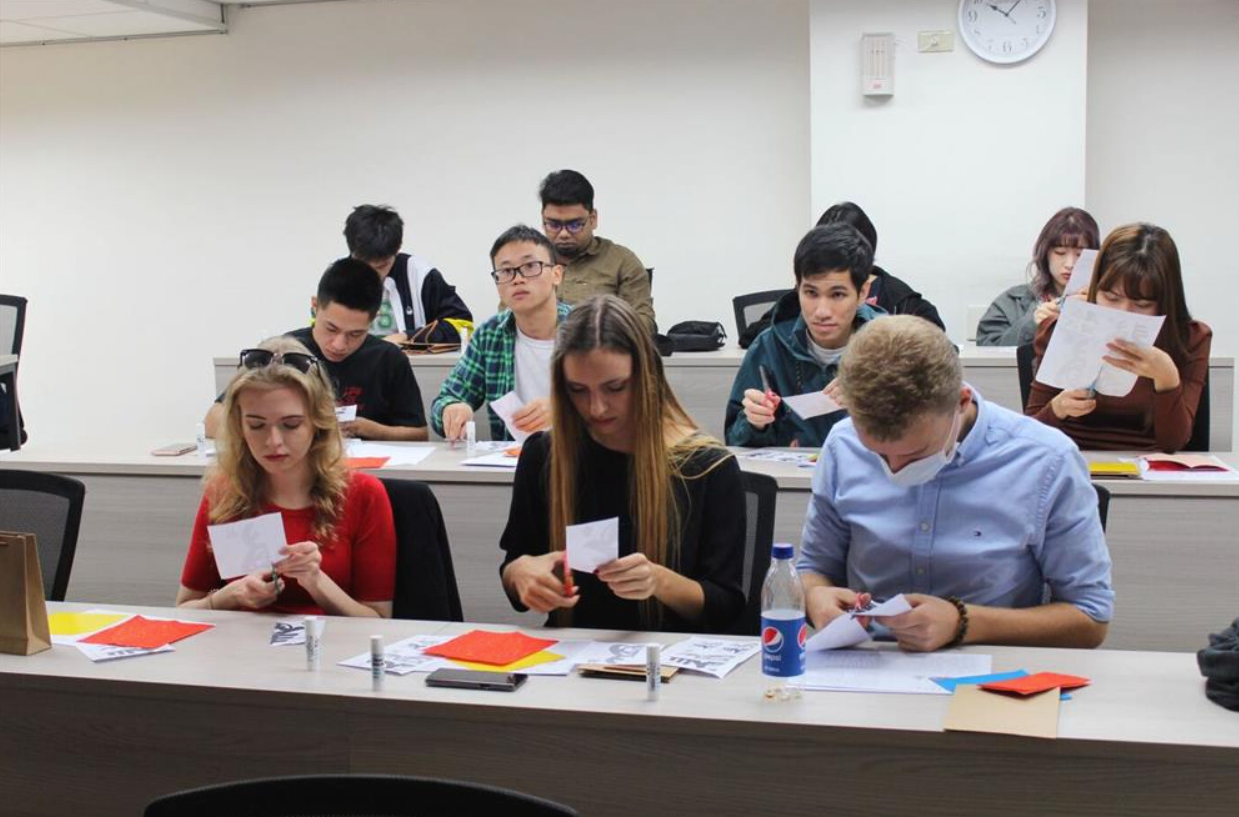黃永銘
專任教授 兼系主任
成功大學 工程科學研究所 博士
專長:教育遊戲、數位學習、路徑分析
信箱:ym.huang.tw@gmail.com
期刊論文
Huang, Y. M.* (2020). Students’ continuance intention toward programming games: hedonic and utilitarian aspects. International Journal of Human-Computer Interaction, 36(4), 393-402. (SSCI)
Huang, Y. M.* (2019). Examining students’ continued use of desktop services: perspectives from expectation-confirmation and social influence. Computers in Human Behavior, 96, 23-31. (SSCI)
Jeng, Y. L., & Huang, Y. M.* (2019). Dynamic learning paths framework based on collective intelligence from learners. Computers in Human Behavior,100, 242-251. (SSCI)
Huang, Y. M., Lou, S. J., Huang, T. C., & Jeng, Y. L. (2019). Middle-aged adults’ attitudes toward health app usage: a comparison with the cognitive-affective-conative model. Universal Access in the Information Society, 18(4), 927-938. (SSCI)
Liao, Y. W., Huang, Y. M., Huang, Y. M., Su, Z. Y., & Wei, C. W. (2019). An empirical evaluation of online cooperative programming platforms based on the pact framework and technology readiness. Journal of Internet Technology, 20(2), 345-352. (SCI-E)
Huang, Y. M.* (2019). Exploring students’ acceptance of educational computer games from the perspective of learning strategy. Australasian Journal of Educational Technology, 35(3), 132-149. (SSCI)
Wang, C. S., Huang, Y. M., & Hsu, K. S. (2017). Developing a mobile game to support students in learning color mixing in design education. Advances in Mechanical Engineering, 9(2), 1-6. (SCI)
Huang, Y. M.* (2018). Reason and emotion: how they drive students to play a color game. EURASIA Journal of Mathematics, Science and Technology Education, 14(5), 1911-1924. (SSCI)
Hsieh, J. S. C., Huang, Y. M., Wu, W. C. V. (2017). Technological acceptance of LINE in flipped EFL oral training. Computers in Human Behavior, 70, 178-190. (SSCI)
Huang, T. C., & Huang, Y. M.* (2017). Where are my cooperative learning companions: designing an intelligent recommendation mechanism. Multimedia Tools and Applications, 76(9), 11547-11565. (SCI)
Huang, Y. M.* (2017). Exploring students’ acceptance of team messaging services: The roles of social presence and motivation. British Journal of Educational Technology,48(4), 1047-1061. (SSCI)
Huang, Y. M.* (2017). Exploring the intention to use cloud services in collaboration contexts among Taiwan’s private vocational students. Information Development, 33(1), 29-42. (SSCI)
Wang, C. S., Jeng, Y. L. & Huang, Y. M.* (2017). What influences teachers to continue using cloud services? The role of facilitating conditions and social influence. Electronic Library, 35(3), 520-533. (SSCI)
Chang, R. C., Chung, L. Y., Huang, Y. M.* (2016). Developing an interactive augmented reality system as a complement to plant education and comparing its effectiveness with video learning. Interactive Learning Environments, 24(6), 1245-1264. (SSCI)
Huang, Y. M.* (2016). The factors that predispose students to continuously use cloud services: social and technological perspectives. Computers & Education, 97, 86-96. (SSCI)
Wang, C. S. & Huang, Y. M.* (2016). Acceptance of cloud services in face-to-face computer supported collaborative learning: a comparison between single-user mode and multi-user mode. Innovations in Education and Teaching International, 53(6), 637-648. (SSCI)
Huang, Y. M.* (2015). Exploring the factors that affect the intention to use collaborative technologies: The differing perspectives of sequential/global learners. Australasian Journal of Educational Technology, 31(3), 278-292. (SSCI)
Huang, Y. M.*, Wang, C. S., & Liu, Y. C. (2015). A study of synchronous vs. asynchronous collaborative design in students’ learning motivation. International Journal of Information and Education Technology, 5(5), 354-357.
Huang, Y. M., & Huang, Y. M. (2015). A scaffolding strategy to develop handheld sensor-based vocabulary games for improving students' learning motivation and performance. Educational Technology Research & Development, 63(5), 691-708. (SSCI)
Liu, C. H., & Huang, Y. M.* (2015). An empirical investigation of computer simulation technology acceptance to explore the factors that affect user intention. Universal Access in the Information Society, 14(3), 449-457. (SSCI)
Liu, Y. C., & Huang, Y. M.* (2015). Using the UTAUT model to examine the acceptance behavior of synchronous collaboration to support peer translation. JALT CALL, 11(1), 77-91.
Huang, Y. M., Huang, Y. M., Liu, C. H., & Tsai, C. C. (2013). Applying social tagging to manage cognitive load in a Web 2.0 self-learning environment. Interactive Learning Environments, 21(3), 273-289. (SSCI)
Huang, Y. M.*, & Liu, C. H. (2012). Supporting students’ brainstorming using an augmented social network service and exploring their intention to use it. International Journal of Technology and Engineering Education, 9(2), 9-22.
Huang, Y. M., Huang, Y. M., Huang, S. H., & Lin, Y. T. (2012). A ubiquitous English vocabulary learning system: Evidence of active/passive attitudes vs. usefulness/ease-of-use. Computers & Education, 58(1), 273-282. (SSCI)
Huang, Y. M., Huang, Y. M., Wang, C. S., Liu, C. H., & Sandnes, F. E. (2012). Supporting self-regulated learning in Web 2.0 contexts. Turkish Online Journal of Educational Technology, 11(2), 187-195. (SSCI)
Huang, Y. M., Liu, C. H., Lee, C. Y., & Huang, Y. M. (2012). Designing a personalized guide recommendation system to mitigate information overload in museum learning. Educational Technology & Society, 15(4), 150-166. (SSCI)
Tasi, C. S., Huang, Y. M., Liu. C. H., & Huang, Y. M. (2012). Applying VSM and LCS to develop an integrated text retrieval mechanism. Expert Systems with Applications, 39(4), 3974-3982. (SCI)
Wang, C. S., & Huang, Y. M.* (2012). Using blogs and RSS to develop a self-regulated learning system for facilitating students’ self-learning. Journal of Internet Technology, 13(6), 1005-1014. (SCI-E)
Chen, C. C., Wang, D. C., & Huang, Y. M. (2010). VBLM: high-accuracy localization method with verification mechanism for unstable-signal sensor networks. Journal of Information Science and Engineering, 26(4), 1459-1478. (SCI)
Huang, Y. M., Huang. T. C., & Huang, Y. M. (2010). Applying an intelligent notification mechanism to blogging systems utilizing a genetic-based information retrieval approach. Expert Systems with Applications, 37(1), 705-715. (SCI)
Huang, Y. M., Liu., C. H., & Huang, Y. M. (2009). Applying a mixed web-based pedagogy in embedded system education: a preliminary study. International Journal of Technology and Engineering Education, 6(2).
會議論文
廖茂翔、陳耘霆、曾映淳、戴品林、張加楓、黃永銘(2019)。設計與開發一款情境式遊戲應用於反霸凌教育之研究。2019年台灣教育傳播暨科技學會年會,國立交通大學。(2019/11/15)
蔡佩庭、王聖鈞、林尚豫、熊宏嘉、王鼎超、黃永銘(2019)。開發一款幫助兒童記憶英文單字的數位式學習貪吃蛇遊戲。2019第一屆商業教育與管理研討會,南臺科技大學。(2019/06/23)
張皓俊、柯志冠、吳知諺、陳耘霆、廖茂翔、郭育嘉、黃永銘(2019)。設計與開發一款情境式擴增實境遊戲應用於校園導覽之研究。2019第八屆工程與科技教育學術研討會,國立台北師範大學。(2019/05/17)
黃怡靜、郭育嘉、范丙林、黃永銘(2018)。從互動性觀點初探女性向遊戲玩家之沉浸體驗-以神秘信使為例。2018 御宅文化國際學術研討會,東海大學。(2018/12/09~2018/12/10)
莊智堯、郭育嘉、鄭鈺霖、黃永銘(2018)。遊戲式學習與視覺式學習應用於程式設計教學相關文獻回顧。DLT2018 數位生活科技研討會,國立台中科技大學。(2018/06/30~2018/07/01)
莊智堯、郭育嘉、鍾皓崴、劉厔穎、謝孟君、杜逸、黃永銘(2018)。以虛實整合遊戲為例研發一個結合STEAM創客於遊戲設計課程之新式教學。2018第七屆工程與科技教育學術研討會,國立成功大學。(2018/05/18)
李佩洋、沈靖軒、陳愉頻、黃瓊儀、王鼎超、黃永銘(2018)。設計一款適用於資料庫課程的俄羅斯方塊遊戲。2018 IETAC資訊教育與科技應用研討會,修平大學。(2018/03/30)
林翌瑄、黃郁淳、王鼎超、黃永銘(2018)。設計一款適用於資料庫課程的擴增實境式遊戲。2018 IETAC資訊教育與科技應用研討會,修平大學。(2018/03/30)
郭育嘉、蔡惠馨、李佳臻、郭子琳、黃永銘(2017)。設計與實作一款多支線懸疑推理遊戲。TANET 2017 臺灣網際網路研討會,東海大學。(2017/10/25~2017/10/27)
郭子琳、郭育嘉、蔡惠馨、李佳臻、劉佳穎、黃永銘(2017)。設計一個數位遊戲式學習系統以輔助學生提升法律知識。2017第六屆工程與科技教育學術研討會,國立台中科技大學。(2017/05/19)
陳致維、郭子琳、黃芯妤、郭育嘉、姚琮閔、林彥齊、林千玉、黃永銘、徐道義(2016)。角色扮演遊戲與衛生教育的新式結合——以伊波拉病毒為例。2016第十屆台灣數位媒體設計學會國際研討會,東南科技大學。(2016/10/21)
陳致維、黃芯妤、郭子琳、姚琮閔、黃怡靜、郭育嘉、黃永銘(2016)。以伊波拉為例:開發數位遊戲式學習輔導民眾提升病毒預防自我效能。第五屆工程與科技教育學術研討會,國立台灣師範大學。(2016/05/13)
陳韋龍、黃怡靜、賴冠傑、劉佳穎、黃永銘、郭子琳、黃芯妤(2015)。提升學生對於畫面光影的靈敏性之教學遊戲。第十一屆台灣數位學習發展研討會,國立高雄師範大學。(2015/11/12~13)
杜亭瑩、翁莉蓉、洪晧倫、黃怡靜、陳韋龍、黃永銘(2015)。行動化混色學習遊戲之設計與發展。創新學習與科技融入教學之主題研討會,國立高雄大學。(2015/05/30)
郭子琳、吳啓東、陳子尹、黃芯妤、郭育嘉、黃永銘(2015)。設計一個數位遊戲以輔助學生學習色彩學。第四屆工程與科技教育學術研討會,國立台灣大學。(2015/05/15)
莊智堯、張國評、張簡偉弘、莊舜凱、黃永銘(2014)。運用探索式教學發展一個混色遊戲。第十屆台灣數位學習發展研討會,國立臺灣師範大學。(2014/11/13~14)
黃永銘、劉建宏、王嘉穗、劉怡君、葉仲超(2014)。以UTAUT 探討雲端協同作業服務於協同學習之影響因素。第三屆工程與科技教育學術研討會,修平科技大學。(2014/05/16)
郭佳澤、石桓宇、陳永盛、黃永銘(2013)。運用雲端化協同作業服務於程式設計課程之探討。第二屆工程與科技教育學術研討會,國立臺灣師範大學。(2013/05/17)
黃永銘、石桓宇、江振豪、施俊賢、蔡崴迪(2013)。運用雲端化協同作業服務於系統分析之學習動機調查。2013年教育高階論壇,國立臺南大學。(2013/05/09~10)
競賽獲獎
指導學生參加「極客松x創客松」創新創意競賽-金銅獎與創新創意獎(2019/12/14~2019/12/15)
指導學生參加2019資訊智慧創新跨域競賽-甲等(2019/12/10)
指導學生參加第13屆文化數位創意加值競賽-數位內容組-第一名(2019/12/05)
指導學生參加TAECT2019教學媒體與教案競賽-佳作(2019/11/15)
指導學生參加2019年全國慈善科技人文網頁設計比賽暨行動APP創作比賽-大學組(行動APP)-第一名(2019/09/28)
指導學生參加2019 放視大賞-創意企劃類-入圍2組(人間動物園、魔藥瘋雲會)(2019/05/15~2019/05/17)
指導學生參加2018點子學園創客競賽-佳作(2018/10/24)
指導學生參加萬潤2018創新創意競賽-電機資訊類-大專組-佳作(2018/10/12)
指導學生參加2018年全國慈善科技人文網頁設計比賽暨行動APP創作比賽-大學組(行動APP)-第三名(2018/09/29)
指導學生參加2018放視大賞競賽-創意企劃類-金賞(2018/05/18)
指導學生參加第一屆台灣車客松-入圍(2018/03/31)
指導學生參加第十一屆資訊教育與科技應用研討會(IETAC 2018)論文競賽-佳作(2018/03/30)
指導學生參加第十一屆資訊教育與科技應用研討會(IETAC 2018)專題競賽-行動應用類-第一名(2018/03/30)
指導學生參加第十三屆數位訊號處理創思設計競賽-佳作(2018/03/16)
指導學生參加2017行動應用設計與行銷APP競賽-第二名(2017/11/25)
指導學生參加106年度愛學網教育遊戲-佳作(2017/11/04)
指導學生參加2016第十屆台灣數位媒體設計學會國際研討會-最佳論文獎-角色扮演遊戲與衛生教育的新式結合-以伊波拉病毒為例(2016/10/21)
指導學生參加第七屆全國崧騰盃遊戲與遊戲機創意設計比賽-行動平台遊戲組-佳作(2016/05/07)
指導學生參加第七屆全國崧騰盃遊戲與遊戲機創意設計比賽-行動平台遊戲組-最佳創意獎(2016/05/07)
指導學生參加104年度高雄市政府數位創意人才創作育成平台人才選秀活動-優選(2015/10/06)
指導學生參加第六屆全國孕龍盃遊戲與遊戲機創意設計比賽-一般遊戲組-創意獎(2015/04/18)
指導學生參加103年度高雄市政府數位創意人才創作育成平台人才選秀活動-優選(2014/10/09)
指導學生參加第五屆全國好馬盃遊戲與遊戲機創意設計比賽-一般遊戲組-最佳創意獎(2014/04/19)
指導學生參加建國盃全國大專院校創新創業競賽-第二名(2013/11/18)





